 |
| |
   |
 |
Swimming in Current, We Brave Waves, Find Our Way One Stroke at a Time |
| |
“Are you a local?” “Are you studying fishing villages?” “How do you make a living?” These are the questions that Existone Workgang (hereafter, Existone) often gets asked. After all, “going home to inherit the family business/starting up a business” and “being researchers” have become the typical reasons youths turning up at remote fishing villages. Nonetheless, we do not belong to the aforementioned groups. The three core members of Existone are a cultural worker, an artist and a visual designer respectively. Having taken part in actions for different social issues in the past, the existential threat of Magang Fishing Village activated our imagination of social participation, facilitating the formation of our team.
Accumulating working rapport by “hallmark narration”
“Wave” is a force of nature in which people living at the coastal region are wary of. It is also the energy that drives the cycle of resources. The residents at Magang have fostered the audacity of harvesting sea life by diving and the wisdom of avoiding the entanglement of waves. In their mind, getting to know the ocean physically is the best way to do it. With dwindling fisheries resources and out-migration, lands in fishing villages have been massively bought by outsiders. The invaluable ocean culture is in the process of being washed away over time.
In 2018, Magang residents applied for the certification of cultural heritage. They hope to preserve their traditional stone houses. Due to my experience in cultural rescue initiatives, I invited people who are concerned with the cultural heritage and ecosystem to visit Magang. We conducted interviews, and gathered information. However, the application did not go well, following which the residents established a local association to promote the community hallmarks by tour guiding. I also invited Mu-Yun and Yan-Liang who were involved in art creation and visual design to curate a local exhibition using historical records, relics of the fishing village, and old photos. People could go to the exhibition and read up about the place. Externally, “exhibition” and “tour guiding” provided realistic information about the life in the community to outsiders. Internally, they encouraged local residents to re-examine the knowledge and power hidden in their daily lives. During this stage, we used “hallmark narration” to meet the internal and external needs of the community, while accumulating the working rapport with different parties.
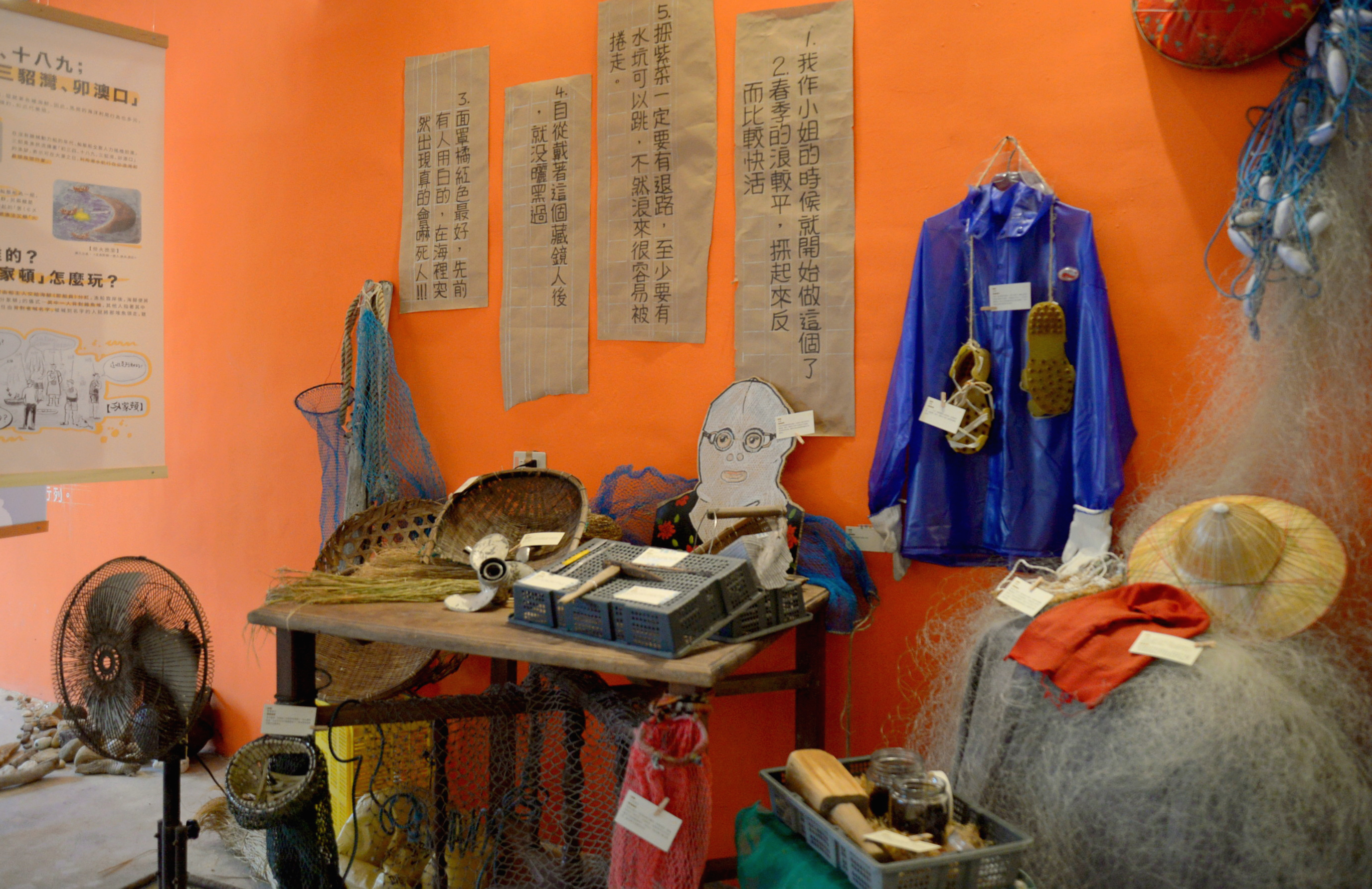
The exhibition, Existone—Our Memories, Our Craft, was held in a venue provided by residents non-gratuitously in 2020. The above shows the exhibition area of harvesting tools used by female divers. (Image Source: Existone Workgang)
In 2020, the self-rescue initiatives of the community coincided with a wave of domestic traveling brought forth by the pandemic. Many local residents opened small seafood stalls to cater to passing-by tourists who came for the beach. The community was blooming. With more tourists, a multitude of intertidal organisms living on the erosion platform was affected. This prompted the association to hold ecosystem training courses, ecological survey and eco tour guiding. By establishing marine records and training courses, we hoped to alleviate the pressure brought forth by tourism onto natural resources. Magang is not exempt from the impact of tourism. After all, it has already become part of the “rural areas” and “marine classroom” accessible by public transportation!
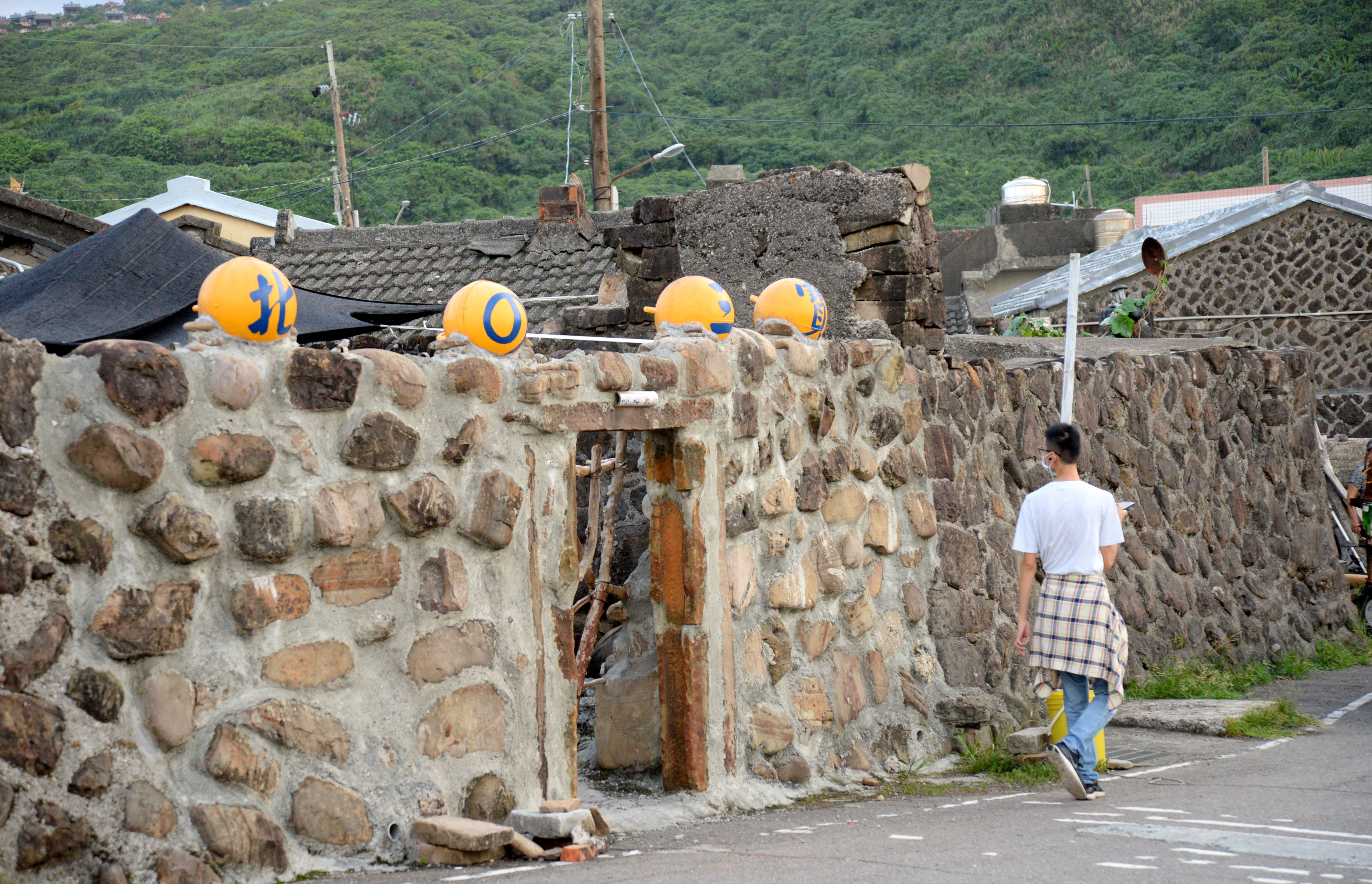
Once tumbled, this stone wall was rebuilt using cement, and has since become part of the charm of local seafood stalls. (Image Source: Existone Workgang)
Exploring public connection of cities, rural areas
Tour guiding has become increasingly stable over time for the association. Visitors who post their photos and speak of their experience in Magang on social media have put the village on the map. Existone therefore changes the positioning of their effort from promotion of local specialty to public connection that goes beyond local areas. In 2021, deviating from holding local exhibition to promote the village, we curated an exhibition, Visiting the Waves, at the Taiwan Contemporary Culture Lab (C-LAB) located at a buzzing area in Taipei. We deliberately took “Magang” out of the title. Nevertheless, using relics, records and video clips borrowed from Magang, the exhibition was divided into “Landscape Window,” “Archive Room” and “Souvenir Zone.”
A large screen was set up at the Landscape Window to project the real-time seascape of Magang. Sitting in chairs of different shapes and sizes, and watching objects surrounding the screening, visitors could appreciate the ocean from different perspectives—camping chairs and fishing equipment for anglers, beach benches for tourists, visitor logbooks, a leather couch representing landowners and their development vision. The Archive Room is a towering “black box.” On the inside, nearly 40 years of media coverage on the northeast region was put up. Visitors could only peep at the information inside via a small aperture, depicting the experience of local residents when facing a lack of information and transparency pertaining to marine disasters. The Souvenir Zone depicted a home-moving scene, where residents piled the things they found hardest to part with in carts, symbolizing their attachment to their home.
The exhibition adopted an open route which allowed visitors to move around at will, depicting tourists’ experience when they explore a place. Following the organization of a massive amount of information, the disappearance or survival of “locality” was well presented. Influenced by “demands of cities,” if people from both cities and rural areas could understand one another, “interface establishment,” in turn, could be explored.
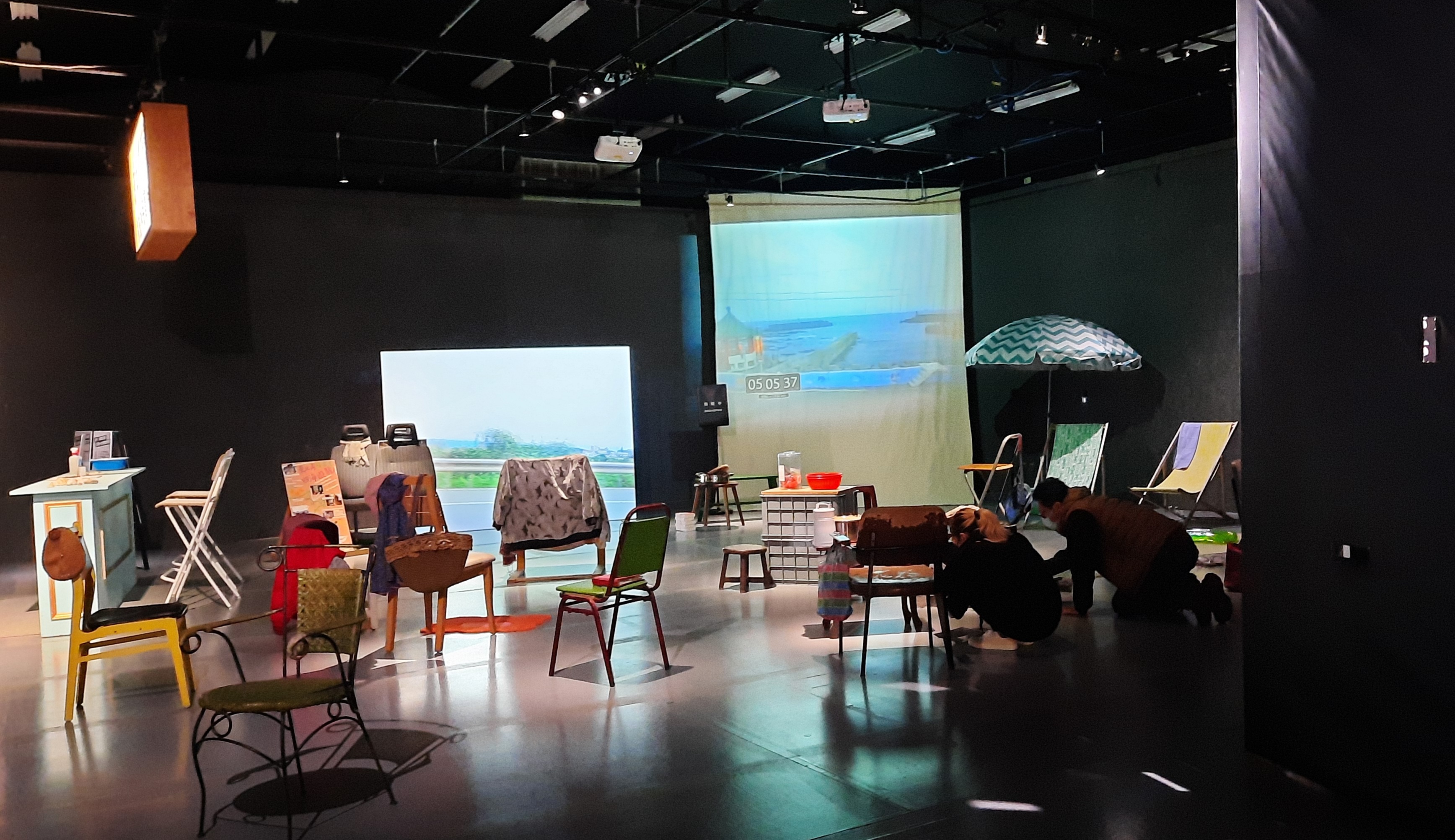
Landscape Window formed by real-time seascape and chairs. (Image Source: Existone Workgang)
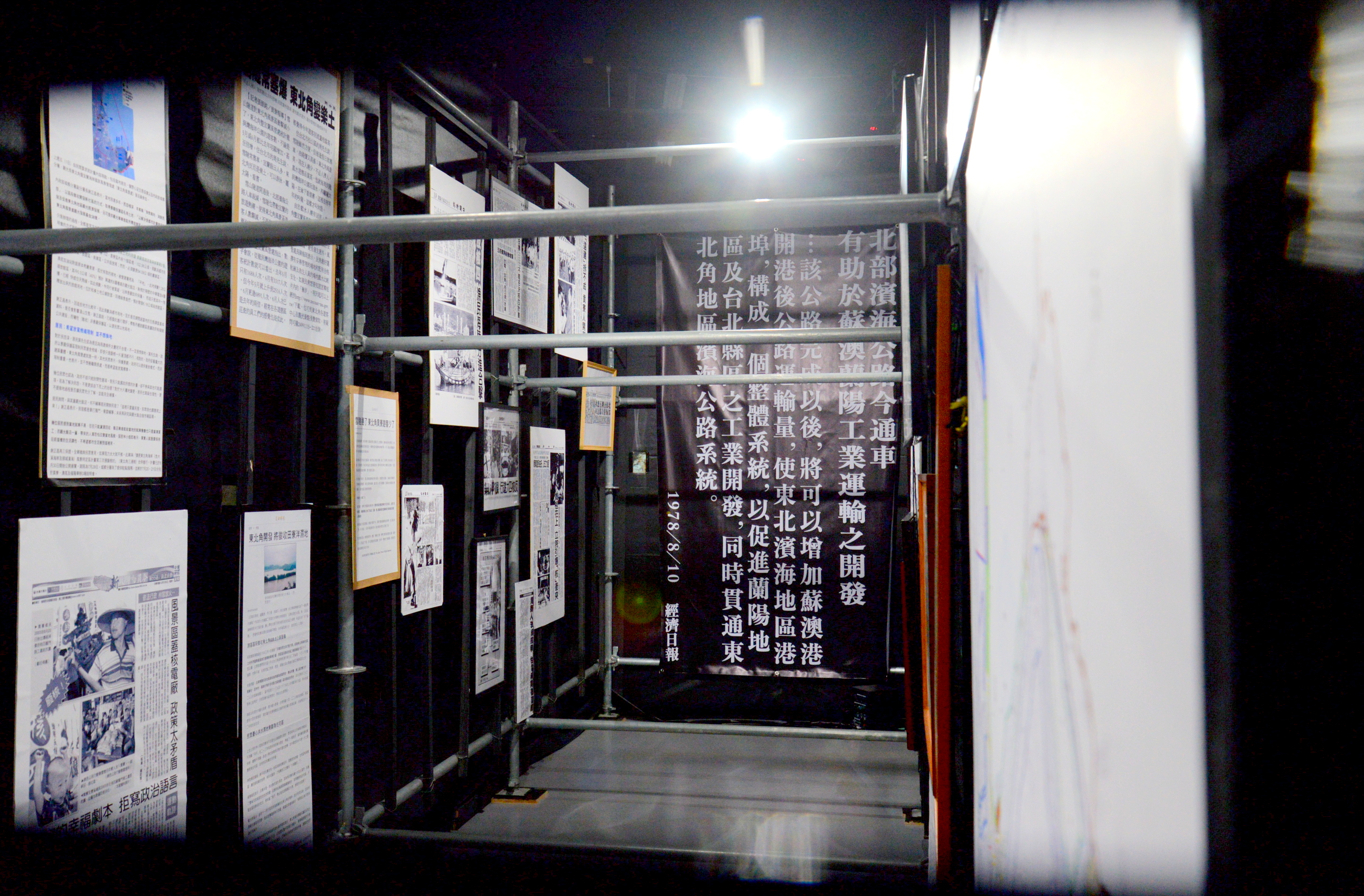
Various records in a towering archive room, documenting nearly 40 years of history of the northeast region. (Image Source: Existone Workgang)
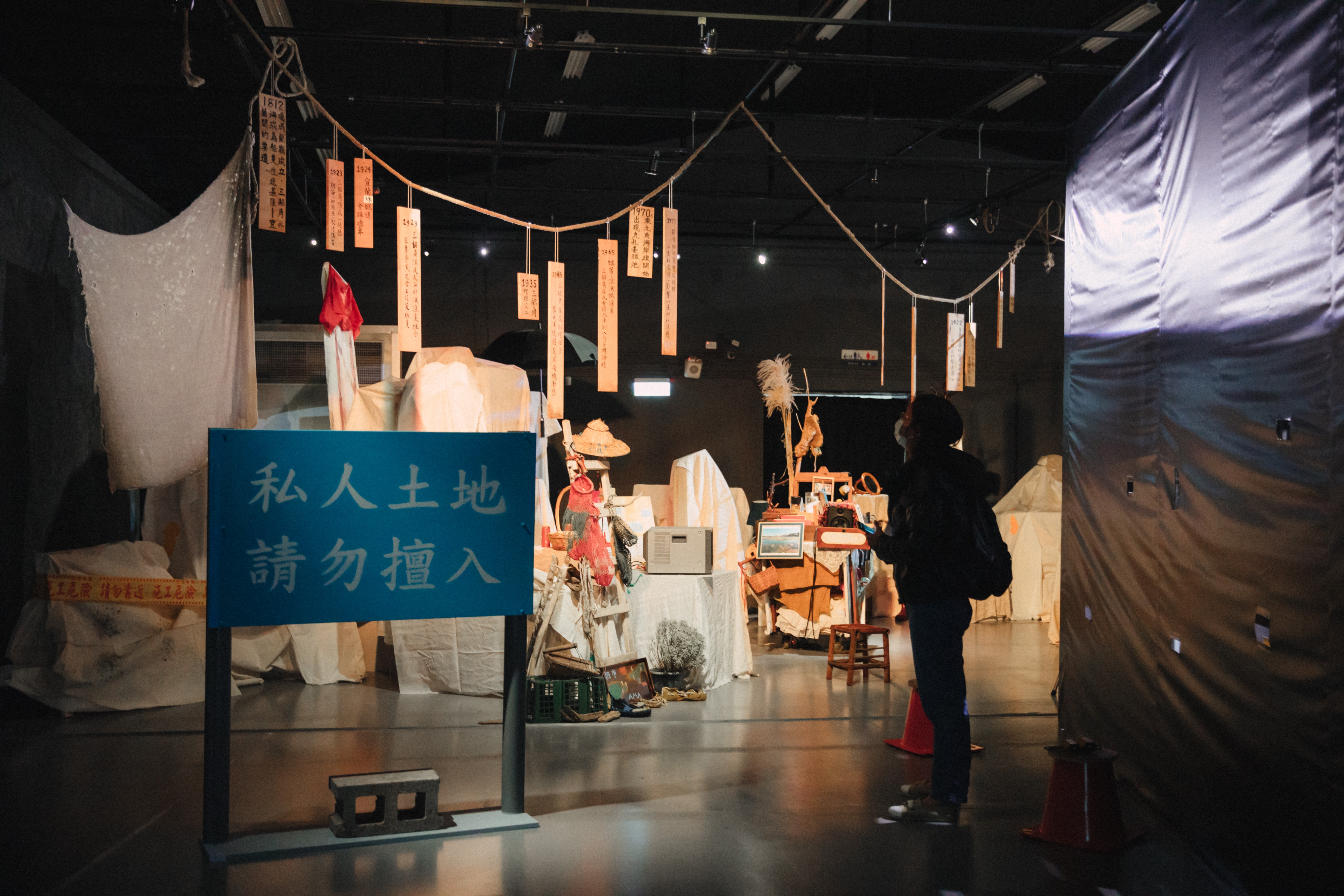
The Souvenir Zone symbolized the disappearing of community life. The signs hung in mid-air recorded local historical events. (Image Source: Existone Workgang)
From farm to table: good interface for facilitating understanding
In 2022, with working experience garnered in previous stages, Existone and a barber shop co-organized the “Magang Four-Season Banquet,” inviting local residents who were not tour guides or working in seafood stalls to the “Potluck and Stories Banquet” for interactions.
The banquet incorporated comprehensive themes of marine knowledge, harvesting craft, and local ingredients. The activity was kicked off with a guided tour to the community. Led by female divers, diners put on straw sandals and took a stroll at the intertidal zones. They were introduced to harvesting gears and biodiversity. Thereafter, at the front yard of a century-old stone house, they were treated to potluck dishes presented by residents. Each dish was made with Magang’s seasonal produce. The residents took turn to share the division of labor in the family in preparing the dish. A husband would serve a dish prepared by his wife and introduce the ingredients, which could be the catch of their son; a daughter in-law would introduce the seasonality of fishes caught by her father in-law and husband, and the corresponding dishes that could be prepared; a son, who used to be a chef and whose mother was a female diver, would make seafood omelet using oysters his mother harvested; and a youngster who would help the elderly in the family in decorating carrier shell dish with carrots. Toward the end of the banquet, diners were invited to an immersive experience using the Visiting Magang app. Based on the guideline in the app, diners could get to visit different corners of the village at will and appreciate its changes over time.
Incorporating locality, ordinary lives and creativity, the Four-Season Banquet opened a window for the residents to mingle with tourists, and express themselves. Tourists were also able to gain an understanding of the authenticity and diversity of the village via a sensory experience and the residents’ recounting. The design of the activity allows more possibility for narration and participation to take place. This, in turn, opens up more interaction in the touring experience and the likelihood of people understanding the ocean in a more in-depth manner.
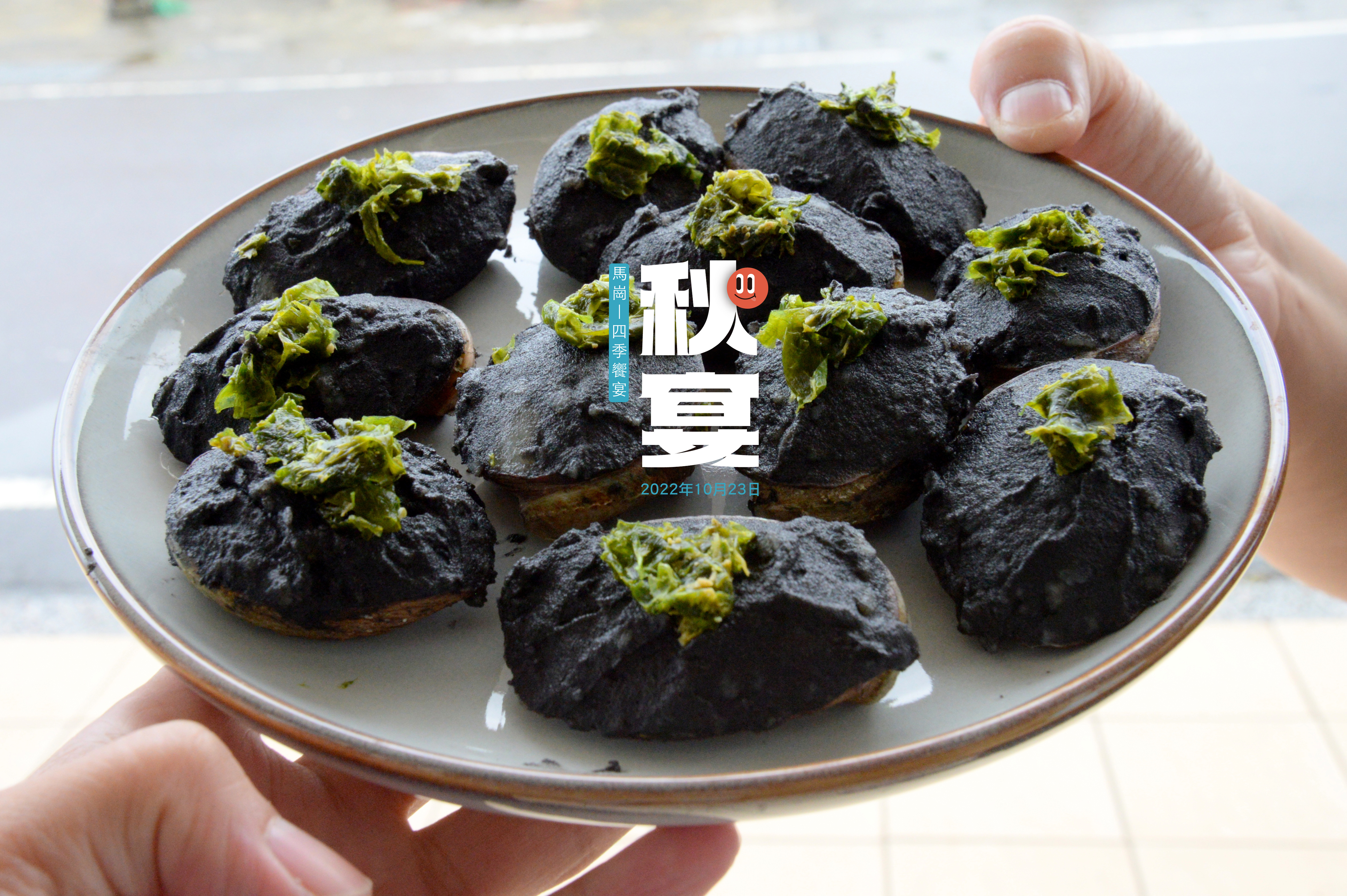
The “Rocks of Magang” dish of the Autumn Banquet was prepared using variously colored abalones to depict the survival issue of stone houses. (Dish prepared by Mundane Food Truck; image source: Existone Workgang)
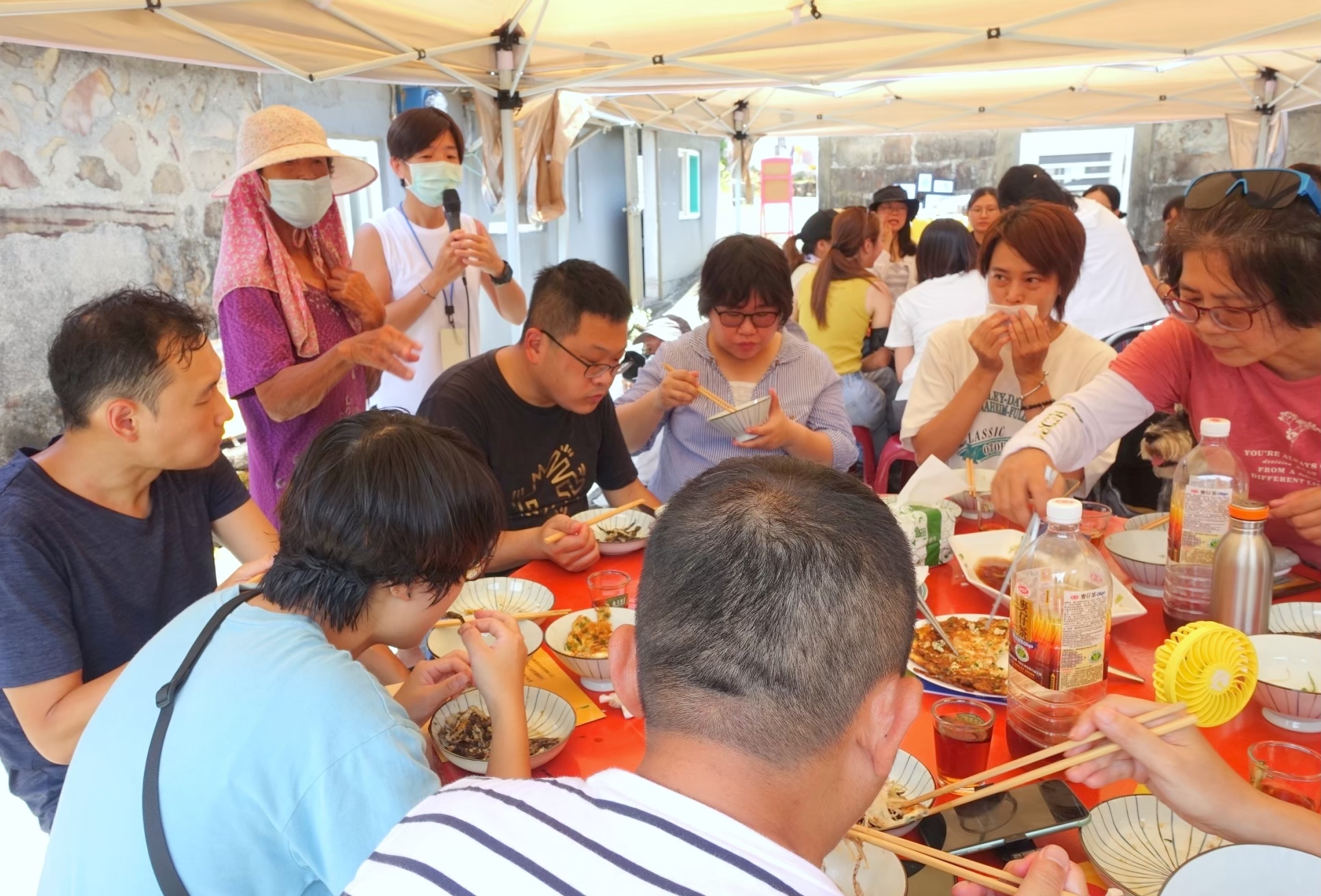
The Summer Banquet of the Magang Four-Season Banquet was held at the courtyard of a stone house. A seasoned female diver, Gangshi explained the steps of harvesting ingredients to diners. (Image Source: Existone Workgang)
Initiating mutual help, interactions in northeast region
Supported by local association and volunteers, the Existone Workgang is able to make use of its non-local flexibility to foster a sense of publicness and social connection. By building the “Wave” label, Magang, as a rural village, no longer has a definitive border. We cannot foresee where the waves will carry the fishing village. Nevertheless, people are willing and have more reasons to come to the village. By adopting an attitude of “swimming in the current,” we and the resident take actions with limitless possibility, and build up a network of mutual help and interactions at the northeast region. We believe that via fostering of interfaces, we can invite more people to step up and fill in the void. In a place whose rise and fall depend on the current, stones are being embedded continuously, to which, one day, a path will form.
Author biography
Existone Workgang – Kuei-Miao Lin has been an activist after she graduated from university. Since 2014, Lin has been involved in rescue initiatives of Taipei Railway Workshop, Blihun monument, and Mitsui Warehouse. In 2018, after getting to know Magang Fishing Village, she started to contemplate the differences between ocean and land cultures, as well as relationship between cities and fishing villages. In 2020, Lin co-founded Existone Workgang with artist, Mu-Yun Ho, and visual designer, Yan-Liang Chen, for which Magang continues to serve as their co-innovation base station. Lin is currently a student at the Graduate Institute of Museum Studies, Taipei National University of the Arts.
Reviewed by: Chia-Hung Hsiang
Authorization in this article:CC3.0 BY-NC-SA
|
|
|
 |







